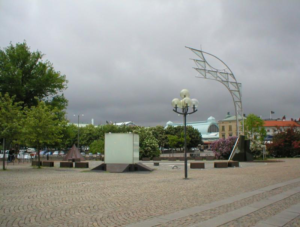Hello! I am an art historian and one of the teachers at the Master’s Programme in Digital Humanities. Most of my research concerns digital art. I believe that by studying art you could learn a lot about the society in which the art has been created. In my research I therefore use digital art as a point of departure for understanding more complex questions.
Given my interdisciplinary background at the intersection of art history and media studies I have approached digital art from several perspectives. For instance, by analysing the challenges digital art faces in relation to preservation and archiving, I believe that it is possible to gain crucial insights concerning not only digital art, but also related to digital cultural heritage on a more overall level.
Right now I am particularly interested in the relation between the digital and the non digital. For instance: what is the difference between looking at an art work through a data base and at a museum? Although it might sound like a rather basic question it is a question that shed light upon several aspects of digital humanities: knowledge production, economy, preservation, digitization, visualization, and, not at least, technological visions, to name but a few. Basic questions like this could serve as a starting point for a critical examination of the impact of digitization in society.
Anna Orrghen, Lecturer at the Department of Art History

“Tidsdokumentet” by Chalmers Tekniska Högskola was a debated piece of public art which controversial history offers many perspectives on the societal mechanisms and climate in Gothenburg, the city where it was place. Studying artworks like this, or the digital manifestations of them, can add to our understanding of society. Photo: Per Johansson (2005) CC BY-SA 3.0
